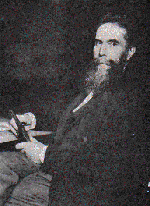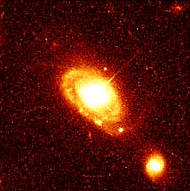|
|
What
is X-ray astronomy?
Light, infrared and
X-rays are all forms of electromagnetic radiation. We can sense
visible light and infrared, but we cannot see or feel X-rays.
No one knew of their existence until 1895. Since they can pass
through all but the densest materials, X-ray machines are used
in hospitals to see the bones and organs of the human body. However,
large doses of X-rays are very dangerous and can cause cancer.
|
|
German
physicist Wilhelm Konrad Roentgen (1845-1923) discovered X-rays
in 1895 |
 |
|

|
Nuclear
explosions produce the extremely high temperatures needed to
generate X-rays |
|
| When
we look in a mirror, our eyes detect the light reflected from
its shiny surface. Unfortunately, normal mirrors are useless
for reflecting X-rays. Instead, they have to be focussed by allowing
them to skim off a series of curved mirrors, rather like pebbles
bouncing off a smooth pond. However, even this is very hard to
achieve, and only a small fraction of the X-rays entering a telescope
can be reflected off a single set of curved mirrors, so it is
difficult to get a detailed picture of X-rays from space. |
| In the
European Space Agency's X-ray Multi-Mirror (XMM) satellite, due
for launch in late 1999, this problem will be solved by
packing 58 mirrors into each of the satellite's three telescopes.
These will capture and focus some 60 per cent of the incoming
X-rays, allowing us to see the X-ray Universe in unprecedented
detail. By the end of its 10 year life, the observatory will
have revealed many of the secrets of such exotic objects as supernovae,
X-ray binary stars, active galaxies and distant quasars (quasi-stellar
objects). |
| |
A
quasar - a gigantic powerhouse driven by a massive black hole |
 |
|